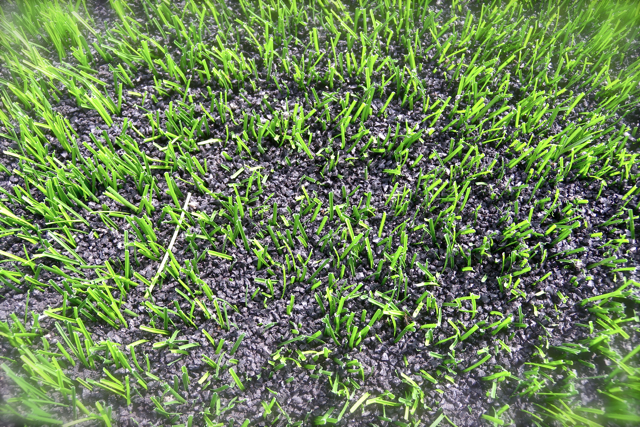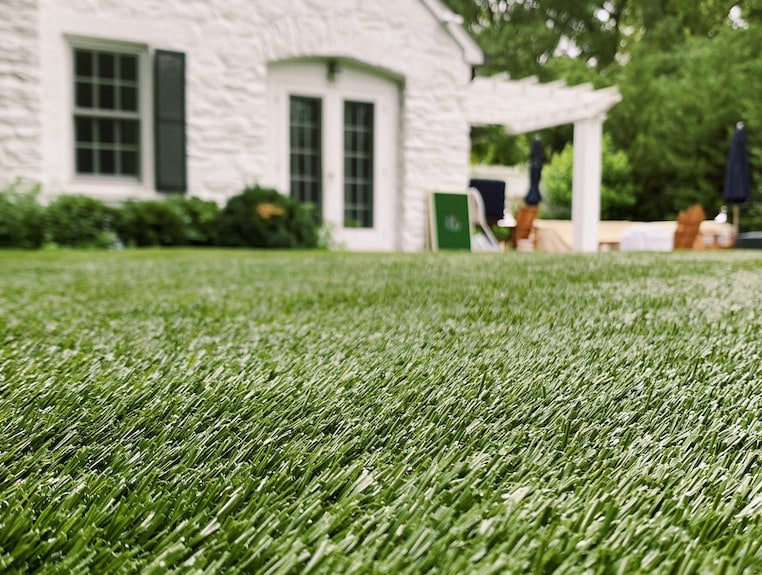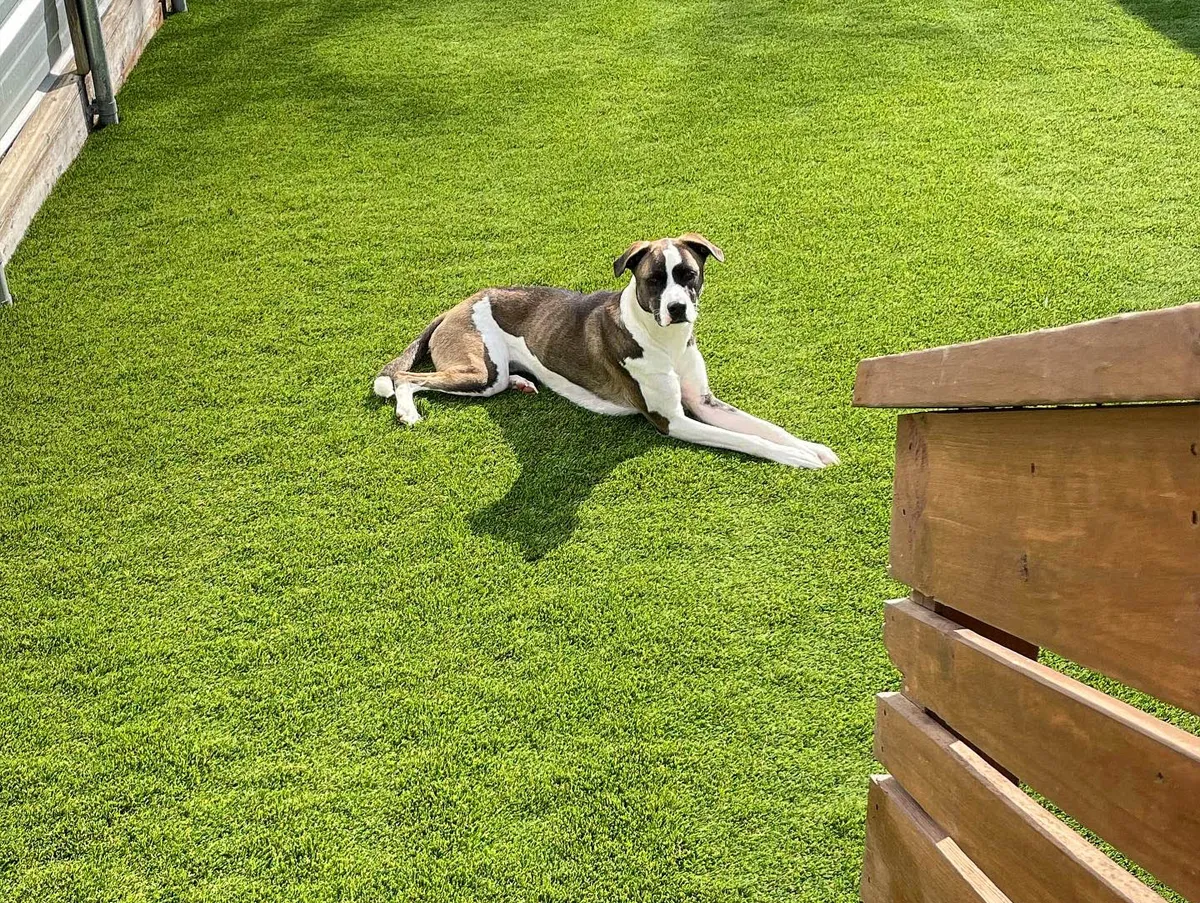High-Quality Arizona Turf Solutions for a Attractive and Green Landscape
High-Quality Arizona Turf Solutions for a Attractive and Green Landscape
Blog Article
See Why Homeowners Prefer Synthetic Grass for Lasting Landscaping Practices
As home owners increasingly prioritize sustainability in landscaping, fabricated turf has arised as an engaging choice to typical yard. What remains to be checked out is the complete scope of benefits that artificial lawn can use to home owners and the atmosphere alike.
Water Conservation Conveniences
One of the most substantial benefits of synthetic grass is its duty in water preservation. In comparison, synthetic grass eliminates this need completely, as it does not call for watering.
In addition, the installation of fabricated lawn can contribute to an extra lasting landscape. Homeowners can substantially lower their water costs, enabling reallocation of resources to various other environmental initiatives or house usages. In addition, man-made lawn is made to hold up against different climatic conditions without the requirement for supplemental watering, making it an excellent selection for regions facing water deficiency.
The ecological benefits expand beyond immediate water financial savings. By reducing water consumption, man-made grass aids to alleviate the impacts of environment change, protecting vital ecosystems that are endangered by excessive water removal. As sustainable landscaping methods acquire traction, artificial turf arises as a responsible choice for homeowners looking for to create environmentally friendly outdoor rooms.
Lowered Upkeep Efforts
Artificial lawn significantly lowers maintenance initiatives compared to typical turf yards. With synthetic yard, homeowners can get rid of the time-consuming tasks linked with natural landscaping, such as mowing, feeding, and weeding. This not just saves important time but also lowers physical labor, making yard care obtainable for individuals of all ages.
Typical grass require regular trimming to maintain a visually pleasing elevation, whereas fabricated grass remains regularly lavish without the need for reducing. In addition, house owners no longer need to apply pesticides or fertilizers, which are often called for to keep all-natural lawn healthy and balanced.
Additionally, man-made grass is resilient and resistant, calling for minimal upkeep past occasional brushing and rinsing to get rid of particles. This convenience of maintenance permits homeowners to enjoy their outside spaces without the constant fear of maintenance, supplying more time for leisure and family activities. Ultimately, the decreased upkeep initiatives connected with synthetic lawn make it an enticing option for those looking for a low-maintenance, visually appealing landscape.

Environmental Effect Decrease
There is a growing acknowledgment of the ecological advantages related to artificial lawn, particularly in regards to water conservation and minimized chemical usage. Typical lawns need substantial quantities of water, particularly in drought-prone areas, leading to raised pressure on regional water sources. On the other hand, synthetic grass removes the need for watering, dramatically lowering water usage and advertising sustainability.
In addition, traditional yard upkeep often involves the application of chemicals, plant foods, and herbicides, which can add to dirt and water pollution. Man-made grass mitigates this ecological threat by needing minimal maintenance and virtually eliminating the need for dangerous chemicals. This not only improves dirt health yet also secures neighborhood ecosystems from poisonous runoff.
In addition, the production of all-natural turf lawns usually involves making use of fossil gas for trimming and landscape design devices, further adding to greenhouse gas discharges. By picking synthetic grass, home owners can substantially lower their carbon impact connected with grass care tasks.
Aesthetic Appeal and Convenience
Along with its ecological benefits, synthetic grass offers considerable visual charm and convenience for landscaping. Homeowners can accomplish a lush, environment-friendly look year-round, getting rid of the seasonal changes typically related to all-natural turf. This consistent visual not only enhances the visual allure of a building but also adds to a sleek and well-kept look.
In addition, synthetic grass is offered in a variety of styles, textures, and colors, enabling modification websites to suit individual preferences and click here to read design motifs - Turf installation phoenix az. Whether utilized in property yards, business rooms, or leisure areas, it can flawlessly integrate right into varied landscape design designs, from contemporary minimal to lush tropical settings
The adaptability of synthetic grass prolongs past mere appearance; it can be set up in different places, consisting of rooftops, outdoor patios, and even indoor areas, creating chances for one-of-a-kind landscaping services. Furthermore, it appropriates for a variety of activities, from youngsters's play locations to pet-friendly environments, offering performance without compromising style.
Inevitably, the visual charm and convenience of synthetic grass make it an eye-catching choice for house owners seeking lasting landscaping services that do not sacrifice beauty for environmental duty.

Long-Term Cost Financial Savings
Among the most engaging advantages of artificial lawn is its potential for long-lasting expense savings. Unlike natural yard, which needs normal maintenance-- including mowing, watering, fertilizing, and insect control-- synthetic grass dramatically lowers these continuous expenditures. House owners can save a considerable amount on water costs, particularly in regions where water shortage is a pushing concern. The removal of yard care services better adds to financial cost savings, as there is no demand for specific equipment or labor.
Additionally, artificial grass has a life expectancy of 15 to 25 years, relying on its quality and usage. This durability decreases replacement prices, making it a more affordable choice over time. The first financial investment in man-made grass can usually be recouped through the cost savings built up over time.
While the ahead of time expense might seem higher contrasted to sod installation, the cumulative cost savings from lowered maintenance and water use usually exceed these preliminary expenses. Inevitably, the fostering of synthetic grass not only advertises a lasting landscaping solution yet likewise provides home owners a financially smart option that aligns with long-term budgeting goals.
Final Thought
Man-made lawn arises as a compelling choice for sustainable landscaping, providing considerable benefits in water preservation, minimized maintenance initiatives, and reduced environmental impact. As communities significantly focus on eco friendly techniques, the fostering of page man-made turf represents a dynamic step towards achieving sustainable and resistant landscapes.
Furthermore, synthetic lawn is made to withstand numerous climatic conditions without the requirement for supplemental watering, making it a suitable choice for regions facing water scarcity. (Arizona turf)

Artificial grass emerges as a compelling alternative for lasting landscape design, providing significant advantages in water conservation, minimized upkeep initiatives, and reduced ecological effect.
Report this page